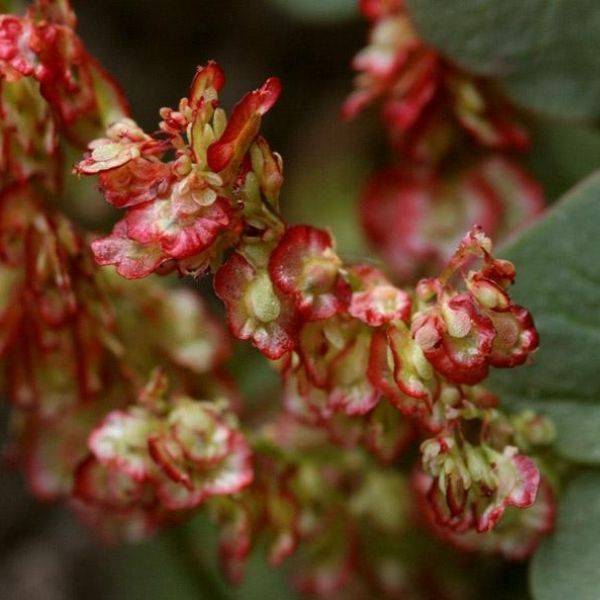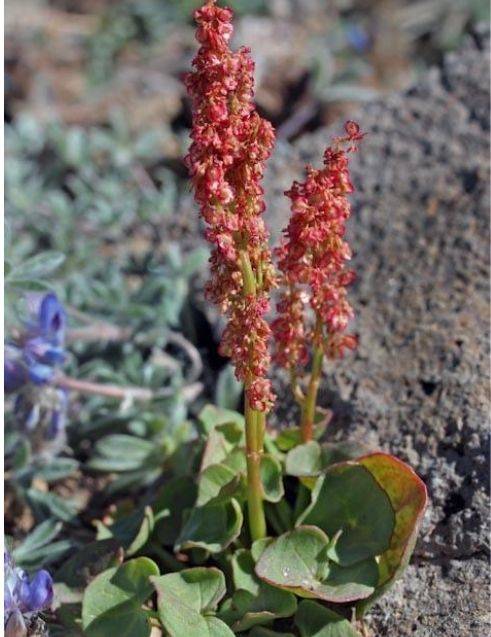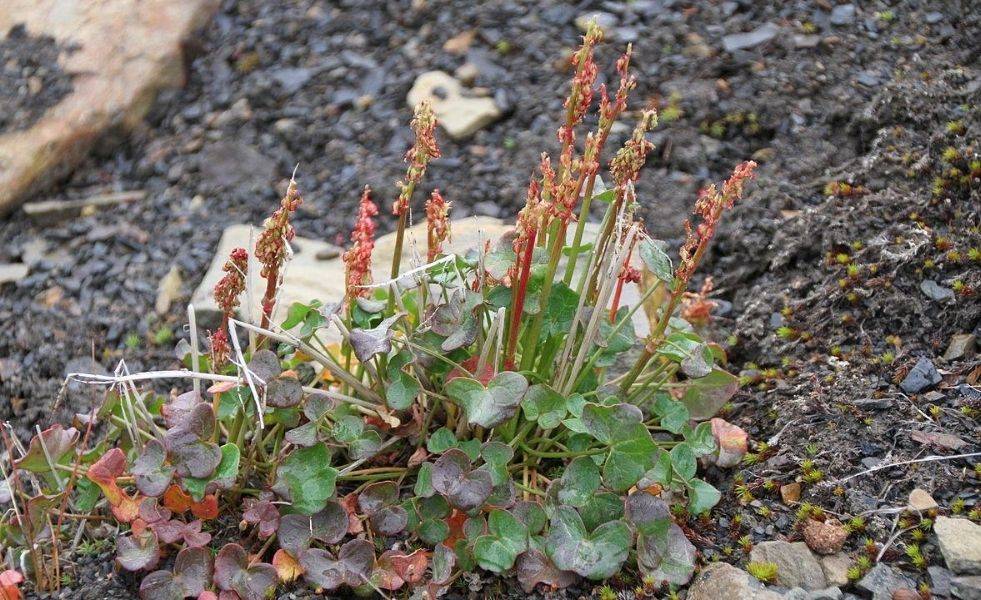Arctic Sorrel
Also called sourgrass or mountain sorrel
- Iñupiaq name: Quŋuliq or Quŋulliq or Quŋulik or Quŋullik
- Family: Polygonaceae
- Scientific name: Oxyria digyna
- Distinguishing characteristics: Plant 8-12 inches tall with cordate (heart or kidney shaped) low growing leaves. Leaves bright red in June, turning green as the summer passes. Small pink flowers clustered on tall red stalks.
- Similar species: Arctic sorrel doesn't have many similar species on the North Slope. Look for Kidney or heart shaped leaves on long, thin stalks growing from the base of the plant and you won't miss it!
- Habitat: Near creeks or streams, wet areas.
- Best time to harvest: Early April through mid May.
- Uses: The sour, tangy leaves are a great source of vitamin C; eaten raw or soaked and preserved in seal oil. Traditionally, leaves and flowers have been boiled to make a delicious tea. Arctic sorrel roots are not typically eaten.

Photo by Patrick Alexander, Intermountain Herbarium Network

Photo by Ron Wolf

Photo by Erlend Bjørtvedt
